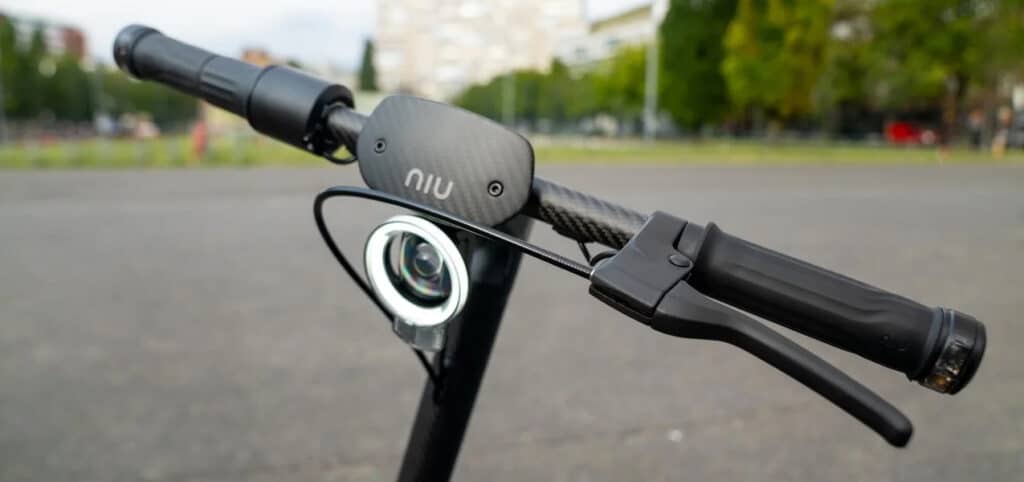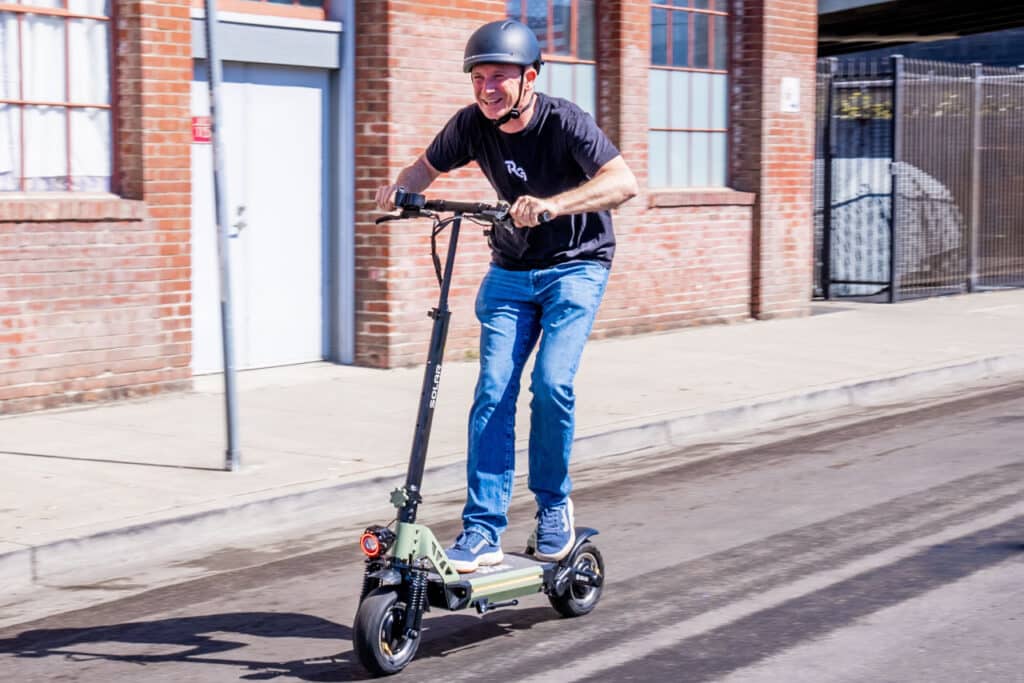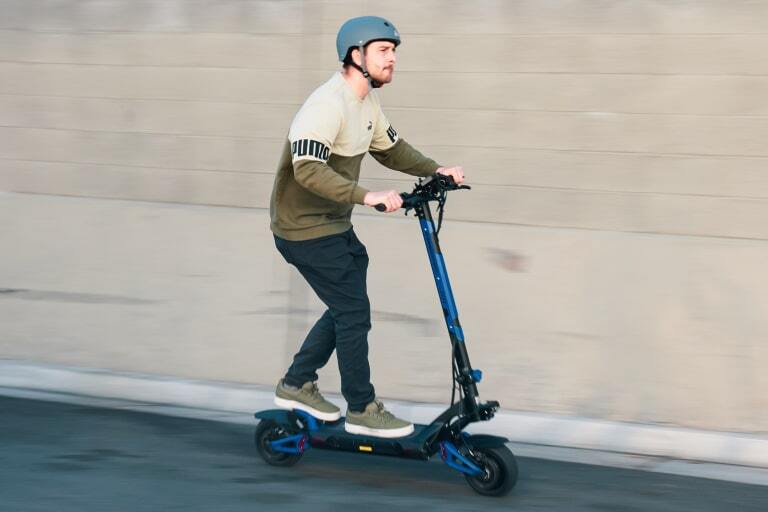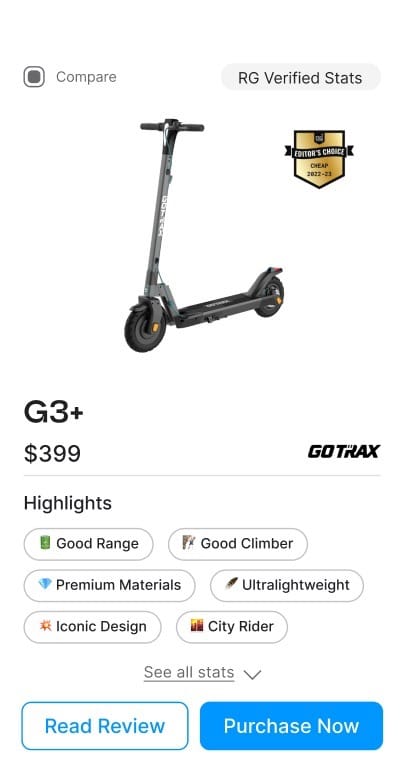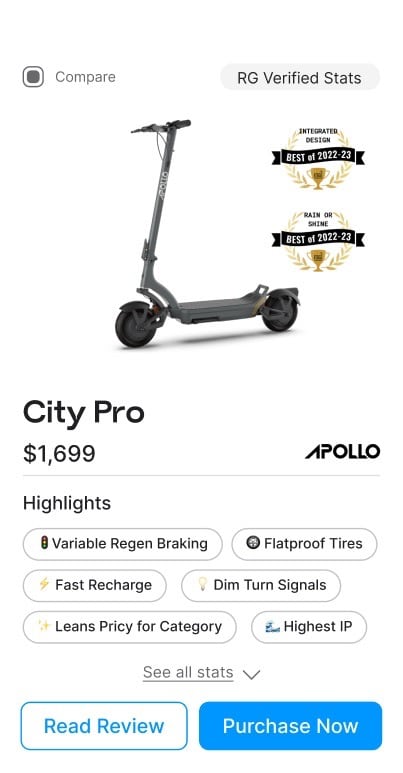How to Safely Charge Your Electric Scooter
Congratulations! You just bought a scooter and are probably worrying about how to charge the battery to keep your expensive investment in tip top shape.
Don’t fret — this article teaches you the myths and truths of how to charge an electric scooter and how to prolong battery longevity — ensuring you get the most life (and miles) out of your battery.
Plug the charger into the wall first
Unless the manual states otherwise, plug the charger into the wall first, before plugging into the scooter. This is the safest bet for protecting the charger and its output capacitors.
The charger will get hot during the charging process, which is completely normal.
Place your charger on edge, uncovered, on a non-flammable surface that will get plenty of airflow.

Connect the charger plug to the scooter's charging port
Power your scooter down and remove the protective cover on the charging port.
Make sure both the port and connector are dust free and blow out if necessary.
Pay careful attention to orient the charger correctly. Most chargers are keyed so they will only go in one way, but some are poorly designed and you can still short the connector.
Plug the charger into the port on your electric scooter.

Wait for scooter to charge
Charge until the indicator light on the charger turns green and promptly disconnect.
For most chargers, the light will turn green before fully charged. If your scooter has a built-in voltmeter or battery display you will notice you’re not quite at 100%.
If you need maximum distance, you can continue to charge until you hit 100% or use as-is.
Use our charging time table to estimate charging time.
Pro Tip: Operating your battery between 30% and 80% of full charge will greatly increase your battery life (see tip #2).

Promptly disconnect the scooter when charged (don't leave plugged in)
Disconnect the scooter from the charger first, then unplug the charger from the wall outlet.
Charge as often as needed.
Use the following tips to max out your battery life.

Tips For Max Battery Longevity
These are the most important tips to prolong battery life, ordered from most to least important.
We’ve noted which recommendations are helpful, and which are impractical and excessive.
1. When storing for long periods, keep your scooter at 40% charge in a cool, dry place
Storing fully charged or discharged will accelerate battery degradation
For longer-term storage, like during winter months, store at 40% charge. Due to self-discharge, you’ll need to check and top up the battery every 4 to 8 weeks to keep it at this level.
Store your scooter in a cool and dry place. Storing above 30 C / 86 F will decrease life. storing fully charged at elevated temperatures is especially bad.
2. Operate your scooter within 30% to 80% of its battery capacity
For individual cells, this ends up being between 3.36 volts (30% of capacity) and 3.96 volts per cell (80% of capacity) is optimal.
We’ve produced a chart below that shows what the final voltage will be on a given scooter at optimal charge.
Optimal Voltage Charging Chart
3. Charge when the battery is between 32 F and 113 F (0 C to 45 C)
Wait until the battery has warmed up above freezing to charge.
Charging the battery at elevated temperatures ( 113 F / 45 C) can shorten its life, but is not as damaging.
4. Don’t leave your charger plugged in after charging
Leaving it plugged in after it has finished charging will result in corrosion of the cathode and decreased capacity.
5. Don’t fully discharge your scooter in less than an hour
However, if you’re really concerned, you basically don’t want to discharge the battery at a rate that will entirely deplete it in less than one hour (this is referred to as a C-Rate of 1.0).
On sustained high speed runs or under heavy torque loads like accelerating up a steep hill, you are likely, if not momentarily, going above this ideal discharge rate.
Our recommendation is to enjoy your scooter and not worry about this too much.
6. Don’t fully charge your scooter in less than an hour
For optimal battery longevity, it is best to fully charge a battery in not less than 1 hour.
For most scooter and charger configurations, you won’t be able to exceed the charging rate -- even with dual quick chargers.
How to Use a Quick Charger
1. If your fast charger has a wall voltage adjustment toggle, set it appropriately (110 V or 220 V).
2. Plug the quicker charger into the wall
3. Adjust the charge rate setting, typically from 1 A to 5 A.
4. Adjust the charge depth setting from 80% to 100%.
5. If the charger has a switch, turn it on.
6. Plug the connector into the charging port of your scooter.
7. Charge until the quick charger display reads the target voltage.
Dual Charging
Charging using a second charger will follow the same steps as above, but for the second charger.
Charging Myths
Myth 1: It is necessary to charge the scooter after every ride
However, if you're going on a long ride then give the scooter a full charge.
Myth 2: You should fully charge a scooter before riding and fully discharge before charging
You should charge when you need the range for a ride and not for any ritual reason.
You do not need to fully discharge your scooter before charging. Li-ion batteries don’t have “memory” like NiCd or NiMH batteries that would require full charge/discharge to maintain capacity
Electric Scooter Charging FAQ
How Long Does it Take to Charge an Electric Scooter

You can use the charging time table to estimate how long a battery will take to charge from 0% to 100%. To use the table find your battery capacity (in Ah) and the current output on your charger (from 1 Amp to 5 Amps). Most smaller scooter chargers are 1 A to 2 A while bigger scooters (or dual chargers) will be 2.5 A to 5.0 A.
Charging Time Table
How Long Does An Electric Scooter Battery Last?
Charger Types and How To Make Sure You Have The Right One
Verifying Charger
Check the connector to make sure it is the appropriate type of fit into your scooter’s charging port.
Verify voltage and current by reading the print on the charger. It will say something like DC Output and give a voltage and max output current.
Connector Types
DC coaxial power plug

- DC coaxial, barrel-style charging connector
- Comes in a variety of lengths and diameters
- Common on smaller, less powerful scooters, including: GOTRAX, Xiaomi, TurboAnt, Segway Ninebot
USB power connector

- Square USB-style yellow power connector
- Uncommon
- Used on the Unagi Model One
XT60

- Square, keyed, two pin connector
- Uncommon
- Used on the Mercane WideWheel
XLR

- Circular, three pin connector often used in audio applications
- Common
- Used on some Inokim scooters
GX16-3P

The Science Behind Charging Your Scooter
How do your scooter’s batteries age?
During charging, lithium ion is shuttled onto the graphite anode. During discharging, the lithium ion is released from the anode.
However, in time, the lithium ion will begin to plate onto the anode and forms a
Over charging, completely discharging, and extreme temperatures accelerate the plating of the lithium ion to anode, degrading it.
Why is it important to store partially charged?
Why is plugging the charger into the wall first the best practice?
The charger has an output capacitor that is sitting 0 volts of potential when not plugged in.
If you connect the unpowered charger to your scooters battery, which is typically at 36 V up to 84 V (depending on scooter) it will discharge a huge amount of current into the 0 V capacitor. This can result in sparking and cause damage to the charger.
By plugging the charger in first, you are bringing the output capacitor voltage much closer to that of the battery. When you plug it in, the voltage difference will be much smaller and you shouldn’t get a current spike.
Why shouldn’t you leave the scooter plugged in after charging?
Related Reviews
